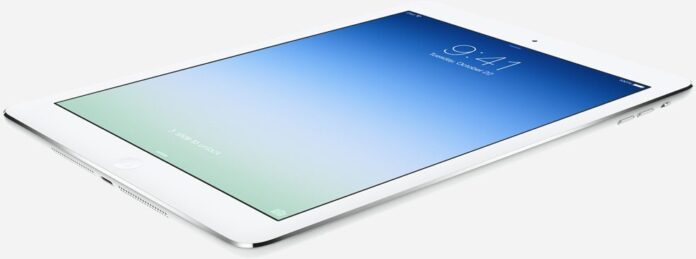With projections of a 35% compound annual growth rate in tablet PCs through 2016 and consumer demand for bandwidth at an all-time high, one would think that manufacturers would be churning out tablets that offer the highest possible wireless capacity, reach and performance. However, this is surprisingly not the case. Last month, when Apple revealed the iPad Air, we learned that the device lacked support for the 802.11ac wireless protocol, the most recent wireless standard established by the IEEE. Though it is still being rolled out in consumer devices, 802.11ac is expected to be pervasive around the globe by 2015.
Since the creation of the iPhone six years ago, Apple has consistently remained on the cutting edge of Wi-Fi technology. Given that numerous other Apple produces have already adopted 11ac – including all MacBooks, it was surprising to see that the iPad Air has been released with legacy Wi-Fi (802.11n) and not the faster 802.11ac. With over 80 percent of all traffic from iPads operating over Wi-Fi connections, Apple arguably will find itself in the hot seat before long, as postponing adoption of 11ac to future versions will put Apple buyers in the position if being behind the curve of technology adoption.
Despite the company’s status as a technology kingpin, this is not the first time Apple has released a product that lacks the latest wireless technology.
Last year, the Wi-Fi Alliance announced Passpoint, which provided a single industry-wide solution for seamless access to broadband over Wi-Fi. That development would enable mobile devices to automatically discover and connect to the best available network. Passpoint was seen by mobile operators as a way of offloading traffic from congested wireless networks. Needless to say, it was much anticipated by operators and end-users.
To validate the hype, the Wi-Fi Alliance even conducted a survey to ascertain public opinion of Passpoint. By overwhelming margins, the organization concluded that Wi-Fi drives data usage, that most users would switch service providers for a Passpoint-like offering, and that users would stay with their current provider if a Passpoint-like offering were included in their plan.
That announcement was made in June of 2012, and yet Apple did not adopt Passpoint technology for the iPhone until September of 2013 (in iOS7). Given the popularity and the maturation of the technology, the exclusion is surprising.
Will Apple’s iPad Air impede 802.11ac adoption?
I don’t expect that Apple’s decision will outweigh what we already know about 802.11ac: businesses consider 802.11ac the next step in the evolution of Wi-Fi to meet the ever-higher density and capacity demands being placed on wireless networks today. An 802.11ac-based Wi-Fi network delivers simultaneous data transfers at switch-like speeds, enabling enterprises to deploy high-bandwidth applications such as video and collaboration tools to BYOD users. 802.11ac advantages include:
– Operates exclusively in the less congested 5 GHz spectrum, which supports much greater capacity than the 2.4 GHz spectrum still used by 802.11n
– Provides faster speeds than 802.11n, operating at up to 1.3 Gbps in Wave 1 implementations, or about three times the maximum data rate of 802.11n
– Supports simultaneous communications on a single channel with multi-user MIMO in future Wave 2 products. That gives it the nature of a switch – as compared to the shared approach of Wi-Fi today, which is more akin to a hub.
– Extends the techniques pioneered in 802.11n: more antennas, more spatial streams and wider channels to improve throughput
To sum up: 802.11ac technology provides a more positive experience for the user. While the iPad Air likely will not suffer for Wi-Fi performance because it does not have 11ac, it does put consumers behind the curve. This becomes ever more important as the number of people accessing the Internet from solely wireless devices such as iPads and iPhones is increasing exponentially every year, and in a wide variety of markets. People want and expect their new iPad or tablet device to last them several years, and most devices will have 11ac support in the next several years. The chipsets have been available for some time at comparable cost to 11n chips. So it doesn’t make sense that Apple chose to include legacy Wi-Fi.
Consumers are always eager to get their hands on the latest Apple gadget. But consumers are less eager to look under the hood of the latest and greatest in Apple products to determine whether or not they implement state–of-the-art technology. To be clear, I think the iPad Air contains some fantastic features and capabilities. But, I am baffled by the decision to opt out of offering state-of-the-art wireless. Wireless connectivity is the lifeblood of mobile devices, and consumers rely on Apple and other technology kingpins to keep them on the vanguard of technology. So why not provide it to them?

